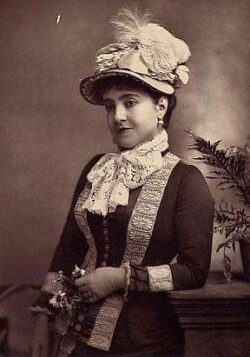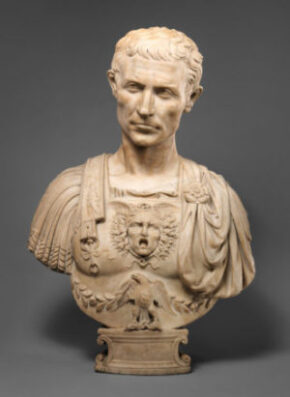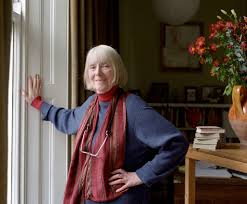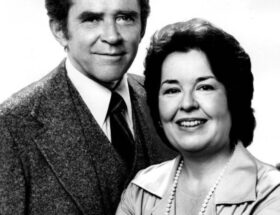Early life

Adela Juana Maria Patti was born on February 19, 1843, in Madrid, the youngest child of tenor Salvatore Patti and soprano Caterina Barilli. Her Italian parents were working in Spain, at the time of her birth. Because her father came from Sicily, Adelina was born a subject of the King of the Two Sicilies. She later carried a French passport, as her first two husbands were French.
Her sisters Amalia and Carlotta Patti were also singers. Her brother Carlo Patti was a violinist who married actress Effie Germon.
In her childhood, the family moved to New York City. Adelina grew up in the Wakefield section of the Bronx, where her family’s home remains standing. She sang professionally from childhood and developed into a coloratura soprano with perfectly equalized vocal registers and a surprisingly warm, satiny tone. Adelina learned how to sing and gained understanding of voice technique from her brother-in-law Maurice Strakosch, who was a musician and impresario.
Career
Adelina made her operatic debut at age 16 on 24 November 1859 in the title role of Donizetti‘s Lucia di Lammermoor at the Academy of Music, New York. On 24 August 1860, she and Emma Albani were soloists in the world premiere of Charles Wugk Sabatier‘s Cantata in Montreal which was performed in honour of the visit of the Prince of Wales.
In 1861, at the age of 18, she was invited to Covent Garden, to execute the role of Amina in Bellini’s La sonnambula. Adelina had such remarkable success at Covent Garden that season, she bought a house in Clapham and, using London as a base, went on to conquer the European continent, performing Amina in Paris and Vienna in subsequent years with equal success.
During an 1862 American tour, she sang John Howard Payne‘s song “Home! Sweet Home!” at the White House for President Abraham Lincoln and his wife, Mary Todd Lincoln. The Lincolns were mourning the death of their son Willie, who had died of typhoid. Moved to tears, the Lincolns requested an encore of the song. Henceforth, it would become associated with Adelina and she performed it many times as a bonus item at the end of recitals and concerts.

Portrait of Adelina Patti (1860s)
Adelina‘s career was one of success after success. She sang not only in England and the United States, but also as far afield in mainland Europe as Russia and in South America as well, inspiring audience frenzy and critical superlatives wherever she went. Her girlish good looks gave her an appealing stage presence, which added to her celebrity status.
In 1869-1870 Adelina engaged in tours through Europe and Russia. Concerts in Moscow and Saint Petersburg were very successful and Adelina repeated her Russian trips throughout the 1870s. In Russia, she made highly prolific friendships with the top eschelons of Russian aristocracy, musicians, writers and intellectuals such Pyotr Ilyich Tchaikovsky, Anton Rubinstein, Alexander Serov and Vladimir Stasov.
In St. Petersburg, during seasons 1874-75s, Adelina met Ernesto Nicolini for the first time. At that time she also became acquainted with prominent Russian historian Dmitry Ilovaysky and his family. This friendship was to last for decades and Ilovaysky’s cousin Stepan, the stalmeister of Tsar Alexander III even travelled to Wales to meet Adelina during the first half of the 1880s. Adelina was also a teacher of Ilovaysky‘s daughter Varvara.
During the 1860s, Adelina possessed a sweet, high-lying voice of birdlike purity and remarkable flexibility which was ideal for such parts as Zerlina, Lucia and Amina but, as Verdi noted in 1878, her lower notes gained fullness and beauty when she grew older, enabling her to excel in weightier fare. Adelina, however, turned into a conservative singer in the final phase of her operatic and concert career. She knew what suited her aging voice to perfection and she stuck to it. Typically, her recital programmes during the 1890s featured an array of familiar, often sentimental, not-too-demanding popular tunes of the day, which were sure to appeal to her adoring fans.
During her mature prime in the 1870s and 1880s, Adelina had been a more enterprising singer, proving to be an effective actress in those lyric roles that required the summoning forth of deep emotions, such as Gilda in Rigoletto, Leonora in Il trovatore, the title part in Semiramide, Zerlina in Don Giovanni and Violetta in La traviata. She also had been prepared to tackle quite dramatic parts in operas like L’Africaine, Les Huguenots and even Aida. She never attempted to sing any verismo parts, however, because these became popular only in the twilight of her career, during the final decade of the 19th century.
Many years earlier, Adelina had experienced an amusing encounter in Paris with the bel canto-opera composer Gioachino Rossini, who was a staunch upholder of traditional Italian singing values. It is related that when Adelina‘s mentor (and brother-in-law), Strakosch, presented her to Rossini at one of his fashionable receptions during the 1860s, she was prevailed upon to sing “Una voce poco fa”, from Rossini‘s The Barber of Seville—with embellishments added by Strakosch to show off the soprano’s voice. “What composition was that?”, asked the prickly Rossini. “Why, maestro, your own” replied Strakosch. “Oh no, that is not my composition, that is Strakoschonnerie”, Rossini retorted. (‘Cochonnerie’ is a strong French idiom indicating “garbage” and literally meaning “that which is characteristic of or fit for pigs.”)
Retirement & death
In her prime, Adelina commanded a payment of $5,000 per night, in gold. Her contracts stipulated that her name be top-billed and printed larger than any other name in the cast.
In his memoirs, the famous opera promoter “Colonel” Mapleson recalled Adelina‘s stubborn personality and sharp business sense. She reportedly had a parrot whom she had trained to shriek, “CASH! CASH!” whenever Mapleson walked in the room. Jerome K. Jerome wrote in 1926:
We had good opera at Covent Garden and sometimes at Her Majesty’s in the Haymarket also. It was the extravagant fees paid to the stars that killed it. I was with a firm of solicitors who acted for Mapleson. Adelina Patti and the others would insist upon sums that were bound to spell loss to the management even when the house was sold out. The argument was that she drew more than she asked. There was no sense in it. Without the orchestra and the chorus and the other performers, the house and all the rest of it, how much would she have drawn night after night?
Adelina enjoyed the trappings of fame and wealth, but she was not profligate with her earnings, especially after losing a large proportion of her assets as a result of the break-up of her first marriage. She invested wisely large sums of money and unlike some of her extravagant former colleagues, such as the star tenor Giovanni Mario, who died in poverty, she saw out her days amid luxurious surroundings.
In 1893, Adelina created the title role of Gabriella in a now-forgotten opera by Emilio Pizzi at its world premiere in Boston. She had commissioned Pizzi to write the opera for her.
Ten years later, Adelina undertook one final singing tour of the United States; however, it turned out to be a critical, financial and personal failure, owing to the deterioration of her voice through age and wear-and-tear. From then on she restricted herself to the occasional concert here or there or to private performances mounted at a little theatre she had built in her impressive residence, Craig-y-Nos Castle in Wales.
Adelina last sang publicly on 24 October 1914, taking part in a Red Cross concert at London’s Royal Albert Hall that had been organised to aid victims of World War I.
Personal life
Engaged as a minor to Henri de Lossy, Baron of Ville, Adelina wed three times: first in 1868, to Henri de Roger de Cahusac, Marquess of Caux. The marriage soon collapsed as both had affairs and de Caux was granted a legal separation in 1877 and divorced in 1885. The union was dissolved with bitterness and cost her half her fortune.
Adelina then lived with the French tenor Ernesto Nicolini for many years until, following her divorce from Caux, she was able to marry him in 1886. That marriage lasted until his death and was seemingly happy, but Nicolini disinherited Adelina, suggesting some tension in the last years.
Adelina‘s last marriage in 1899 was to Baron Rolf Cederström, a priggish, but handsome, Swedish aristocrat many years her junior. The Baron severely curtailed Adelina‘s social life. He cut down her domestic staff from 40 to 18, but gave her the devotion and flattery that she needed, becoming her sole legatee.
After her death, he married a much younger woman. Their only daughter, Brita Yvonne Cederström (born 1924), ended up as Adelina‘s sole heir. Adelina had no children, but was close to her nieces and nephews. The three-time Tony Award-winning Broadway actress and singer Patti LuPone is a great-grandniece and namesake. Drummer Scott Devours is her third great nephew.
Adelina developed a love for billiards and became a reputable player, making guest appearances at many major billiard events for exhibition matches and fancy shot displays.
In her retirement, Adelina, now officially Baroness Cederström, settled in the Swansea Valley in Wales, where she purchased Craig-y-Nos Castle. There she had a $2000 billiard table installed and her own private theatre, a miniature version of the one at Bayreuth, and made her gramophone recordings.
Adelina also funded Craig-y-nos railway station on the Neath and Brecon Railway. In 1918, she presented the Winter Garden building from her Craig-y-Nos estate to the city of Swansea. It was re-erected and renamed the Patti Pavilion.
Adelina died at Craig-y-Nos on September 27, 1919, of natural causes. Eight months later she was buried at the Père Lachaise Cemetery in Paris to be close to her father and favourite composer, Rossini, in accordance with the wishes in her will.



